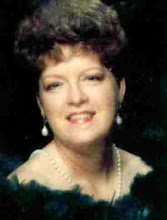
The Giving Tree Lesson
A TeachersFirst holiday lesson based on Shel Silverstein's bookThe Giving Tree.
Synopsis: After reading and discussing the book The Giving Tree, students reflect and write about the gift they would most like to give.
Subject/Grade level: This lesson can be adapted for use in language arts class with students of varying ability levels in grades 2 - 8. This lesson is also well-suited to a multi-age activity with "big buddies" and "little buddies" from upper and lower grades working together. School counselors and emotional support teachers may find this activity helpful for small groups working on social skills, as well.
Objectives: Students will discuss the message of The Giving Tree.Students will write a message about giving to be shared with classmates and others.
Materials: You will need at least one copy of The Giving Tree by Shel Silverstein. Ask students to bring in scraps of holiday wrapping paper to use as part of the lesson (non-electronic). Ideally, these should be heavy wrapping paper with a white reverse side.
Synopsis: After reading and discussing the book The Giving Tree, students reflect and write about the gift they would most like to give.
Subject/Grade level: This lesson can be adapted for use in language arts class with students of varying ability levels in grades 2 - 8. This lesson is also well-suited to a multi-age activity with "big buddies" and "little buddies" from upper and lower grades working together. School counselors and emotional support teachers may find this activity helpful for small groups working on social skills, as well.
Objectives: Students will discuss the message of The Giving Tree.Students will write a message about giving to be shared with classmates and others.
Materials: You will need at least one copy of The Giving Tree by Shel Silverstein. Ask students to bring in scraps of holiday wrapping paper to use as part of the lesson (non-electronic). Ideally, these should be heavy wrapping paper with a white reverse side.
Credit Source:
TeachersFirst.com • The web resource by teachers, for teachers. For more lesson details, see: http://www.teachersfirst.com/lessons/givingtree.cfm
Shel Silverstein Lesson plans for The Giving Tree and other works http://www.webenglishteacher.com/silverstein.html
TeachersFirst.com • The web resource by teachers, for teachers. For more lesson details, see: http://www.teachersfirst.com/lessons/givingtree.cfm
Shel Silverstein Lesson plans for The Giving Tree and other works http://www.webenglishteacher.com/silverstein.html
















